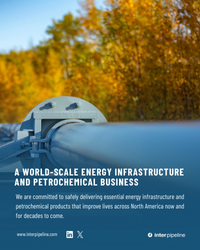LNG export projects looking to take a positive final investment decision (FID) need to sell a high proportion of their nameplate capacity under long-term contracts to ensure sufficient cash flows to underpin the project and obtain financing. U.S.-based projects (new and expansions) totaling more than 350 million tons per annum (MMtpa, 48.3 Bcf/) — against a current global market of 400 MMtpa (52.9 Bcf/d) — are vying for creditworthy offtakers from multiple markets in their pre-FID deliberations. The sense of urgency among project sponsors has been boosted by the Russia/Ukraine war and a potentially resurgent Chinese economy, both of which should promise a bright future for new projects. Plenty of those have reached FID in the last couple of years, but what is holding others back from taking the same step? In today’s RBN blog, we’ll look at some of the factors impacting those decisions and the long-term implications that flow from them.
Data from the International Group of Liquefied Natural Gas Importers (GIIGNL) shows that long-term sales and purchase agreements (SPAs) are in place for 73 MMtpa (9.7 Bcf/d) of LNG supply to be met by projects along the U.S. Gulf Coast. So far in 2023, three such projects have taken FID: NextDecade (17.6 MMtpa, 2.3 Bcf/d), Port Arthur (13 MMtpa, 1.7 Bcf/d), and Plaquemines Phase 2 (6.7 MMtpa, 0.9 Bcf/d) for a combined 37.3 MMtpa (4.9 Bcf/d), a significant amount in any year. But those three account for only 60% of the LNG signed up, with the rest divided among a number of pre-FID projects. As we discussed in Money’s Too Tight (To Mention), new LNG projects face a range of challenges in obtaining financing, especially where sponsors are looking to attract non-recourse financing, whereby loans are paid entirely from the project’s cash flow without appearing on the sponsor’s balance sheet. (For more on LNG projects under development, see our weekly LNG Voyager report.)
This has led project sponsors to look for greater equity investment, offering stakes in their project companies to third-party investors. A good example of a successful financing model is Port Arthur Phase 1. The finance structure of the project has the following elements:
- A $7 billion non-recourse loan provided by a group of 21 banks. This accounts for 54% of the total project cost of $13 billion.
- Sale of a 42%, non-controlling share in the project to KKR.
- Sale of a 30% share in the project to ConocoPhillips, which will manage the acquisition and delivery of pipeline gas to the plant and lift 5.4 MMtpa (0.7 Bcf/d) of the project’s13 MMtpa (1.7 Bcf/d) output.
- Sempra will retain a controlling 28% equity in the project.
Join Backstage Pass to Read Full Article









